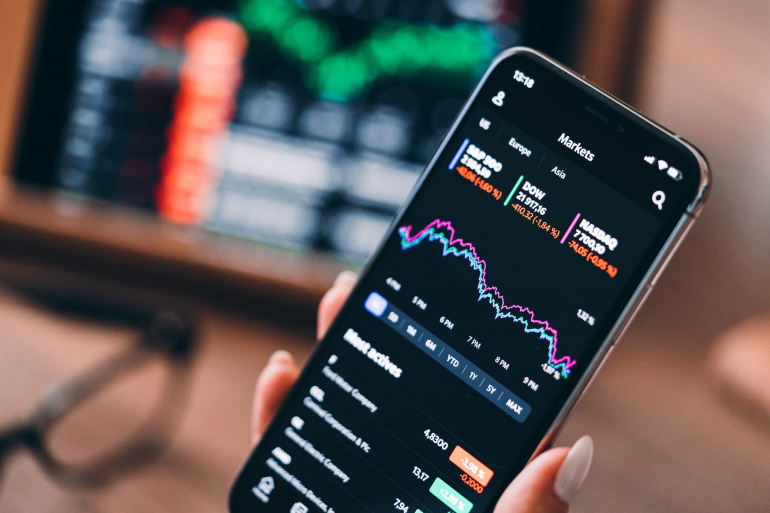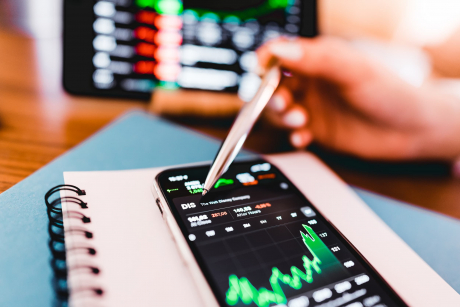The Robinhood IPO, one of the most anticipated stock listings of the year, took place on July 29, 2021, on Nasdaq. Under the ticker symbol ‘HOOD’, Robinhood shares hit the public markets with the opening price of $38 per share, the low end of its range, achieving a valuation of $31.8 billion. Offering 55 million shares of its class A common stock, Robinhood, the online brokerage raised almost $2.1 billion, while “co-founders Vlad Tenev and Baiju Bhatt each sold about $50 million worth of stock,” according to CNBC.
https://www.cnbc.com/2021/07/29/robinhood-hood-ipo-stock-starts-trading-on-the-nasdaq.html

Robinhood Shares Fell 8.4% after $2.1 Billion IPO
Surprisingly, the Robinhood Nasdaq debut wasn’t as successful as it had been expected, revealing subdued investor demand for the shares of popular online brokerage that provided commission-free trading to millions of Americans.
Robinhood shares opened trading at $38 but later took a dive by 11%, finally ending the session at $34.82. The stock-trading start-up finished its first day of trading down 8.4% below its initial public offering price with a market capitalization of about $29 billion, showing retail investors' leeriness and skepticism over Robinhood’s mission of democratizing finance and upending Wall Street.
Given employee stock holdings and options, Robinhood’s fully diluted value climbed to approximately $30 billion, yet it is still lower than the assumed $36 billion valuation based on the top end of its price range. The main underwriters leading the deal are JPMorgan Chase and Goldman Sachs which have an option to purchase an additional 5.5 million shares.
Back to topWhy did Robinhood Shares Price Fall 8.4% in the Public Market Debut?
Robinhood allocated an exceptionally large portion of its IPO shares to retail investors. Despite the initial setting aside of 35% of the IPO deal, the online brokerage firm sold approximately 20% to 25% of the offering to individual stock buyers, according to Bloomberg.
As IPO shares have normally been reserved for Wall Street’s institutional investors, including hedge funds or investment banks, or high net worth individuals, individual investors usually miss out the IPO investing opportunities since they don’t have a chance to purchase securities in newly listed companies until their shares start trading on a market. Robinhood’s allocation of shares seems to be noble, nevertheless, it could influence retail investors' demand for securities, decreasing the closing offer price.
The flimsy interest of retail stock buyers in Robinhood’s stocks and their quite high volatility on the first day of trading may also result from a few reasons, including the Reddit postings suggesting to avoid Robinhood’s IPO and various legal issues which the online platform is involved in.
What’s more, Robinhood made its public debut in a record-breaking year of U.S. listings, boosted by low interest rates, the bull market’s resilience, and substantial liquidity.
The number of IPOs in the first quarter of 2021 reached 365 IPOs, skyrocketing by 677% compared to a year ago, according to Fortune.
In this record-setting year, 695 firms, including special purposes acquisitions companies, raised approximately $231 billion in IPOs on U.S. exchanges. Robinhood’s IPO was the sixth-largest IPO of the year, excluding the closed-end funds and SPACs IPOs, according to Bloomberg.
Each of the seven listings raised $2 billion or more. However, Robinhood and AppLovin Corp. ended the first trading day below the initial public offering price and only three of those seven public companies are trading above their IPO price.
Robinhood’s IPO flop during the first trading day showed that the market is apparently losing momentum, which has been noticed by companies planning their IPOs. For one, Clarios International Inc., car battery maker, and Preston Hollow Community Capital Inc., a provider of specialized financing solutions, delayed their IPOs indefinitely, according to Bloomberg.
Apart from the legal issues that Robinhood is facing, there is one more factor that could influence the volatility of the online brokerage shares on the first trading day. Instead of locking the company insiders up for the first six months, Robinhood allowed them to sell up to 15% of their securities right away.
Back to topHow Much Is Vlad Tenev Worth?
As Robinhood became one of the hottest names, renowned for not only introducing no-fee trading but also for imposing trading curbs while the meme stock frenzy led to billion-dollar fines from financial regulators, Robinhood IPO was a highly awaited moment by financial markets.
Co-founders of Robinhood, Vlad Tenev and Baiju Bhatt, became billionaires with the IPO. According to the Bloomberg Billionaires Index, Vlad Tenev and Baiju Bhatt’s holdings were estimated at $2.4 billion and $2.8 billion, respectively. Shortly before Robinhood shares started trading on the market, Tenev said: “We’re not thinking about anything that happens in the market, especially in the short term,” according to Bloomberg.
Back to topHow Did Robinhood Grow?
Founded in 2013, Robinhood has been pushed forward due to the coronavirus pandemic tailwind in 2020 since millions of homebound Americans decided to start online trading and found Robinhood’s commission-free trading app very appealing.
Robinhood, which offers equity, options, and cryptocurrency trading, as well as cash management accounts, aims at millennials who are the main age group of Robinhood app users. They are usually first-time investors who cut their teeth on investing right there.
The app recorded exceptionally high trading levels and the influx of new users during the coronavirus pandemic and the meme stock binge in January 2021. According to Robinhood Inc. filings with the U.S. Securities and Exchange Commission, in the first quarter of 2021, Robinhood’s revenue jumped to over $522 million in comparison with $128 million, generated in the same period last year.
In terms of the number of users and assets under management, Robinhood’s growth is impressive. In the first quarter of 2021, Robinhood had 18 million retail clients and $80 billion in assets under management which climbed to a staggering number of 22.5 million and $100 billion in customer assets in the second quarter.
Robinhood estimates its 18 million retail clients and more than $80 billion in customer assets in the first quarter ballooned to 22.5 million users and more than $100 billion in the second quarter of 2021.
However, mainly due to the various fines imposed by regulators, for instance, the FINRA, the company’s losses surged enormously, from $53 million for the first quarter of 2020 to $1.44 billion for the first quarter of 2021.
Back to topIntensified Regulators’ Oversight
The increased popularity of the online brokerage app resulting from the no-fee commission and the gamified trading practices, boosted by setting buying restrictions during the GameStop trading frenzy in January 2021, prompted regulators to closer scrutiny which led to the imposition of million-dollar fines.
The Financial Industry Regulatory Authority imposed a record-breaking fine of $70 million on Robinhood for providing customers with false and misleading information, not preventing outages, and approving option traders, but Robinhood didn’t take a stand on the FINRA allegations.
Back to topHow does Robinhood Make Money?
Robinhood has several sources of revenue with the main practice at the forefront known as payment for order flow which makes roughly 50% of its money, based on directing customers' orders to market makers. In the first quarter of 2021, Robinhood earned $331 million in payment for order flow, which triggered increased scrutiny from regulators.
The other sources of Robinhood money are Robinhood Gold membership fees, margin lending, and cash management.
More on how Robinhood makes money, here: How Does Robinhood Make Money?
Conclusion
With 22.5 million users, Robinhood is the third-largest brokerage based on the number of accounts, behind Charles Schwab with 32.3 million accounts and $7.57 trillion in client assets, and Fidelity, with 83.4 million accounts and $10.4 trillion assets under administration.
Like our content? Follow BUSINESS POWERHOUSE on LinkedIn, Twitter, Facebook, Instagram, and Pinterest to stay up-to-date on our latest articles.
Disclaimer: The price of shares may vary due to the continuous stock trades. The information contained herein is for informational purposes only and nothing in this article should be taken as a solicitation to purchase or sell securities.
Disclosure: On the date of publication, the author did not have (either directly or indirectly) any positions in the securities mentioned in this article.
Back to topAuthor: Justine Ilone Siporski is Editor-in-Chief & CEO of BUSINESS POWERHOUSE, the founder and CEO of LANGUAGE EMPIRE, coach, trainer, investor, and columnist dedicated to the advancement of entrepreneurs, investors and the C-suite (CEOs, CMOs, CFOs, CIOs). Her key mission is to support leaders, business people, and investors in achieving their highest potential, making the right business and investing decisions, and expanding their horizons.







Comments